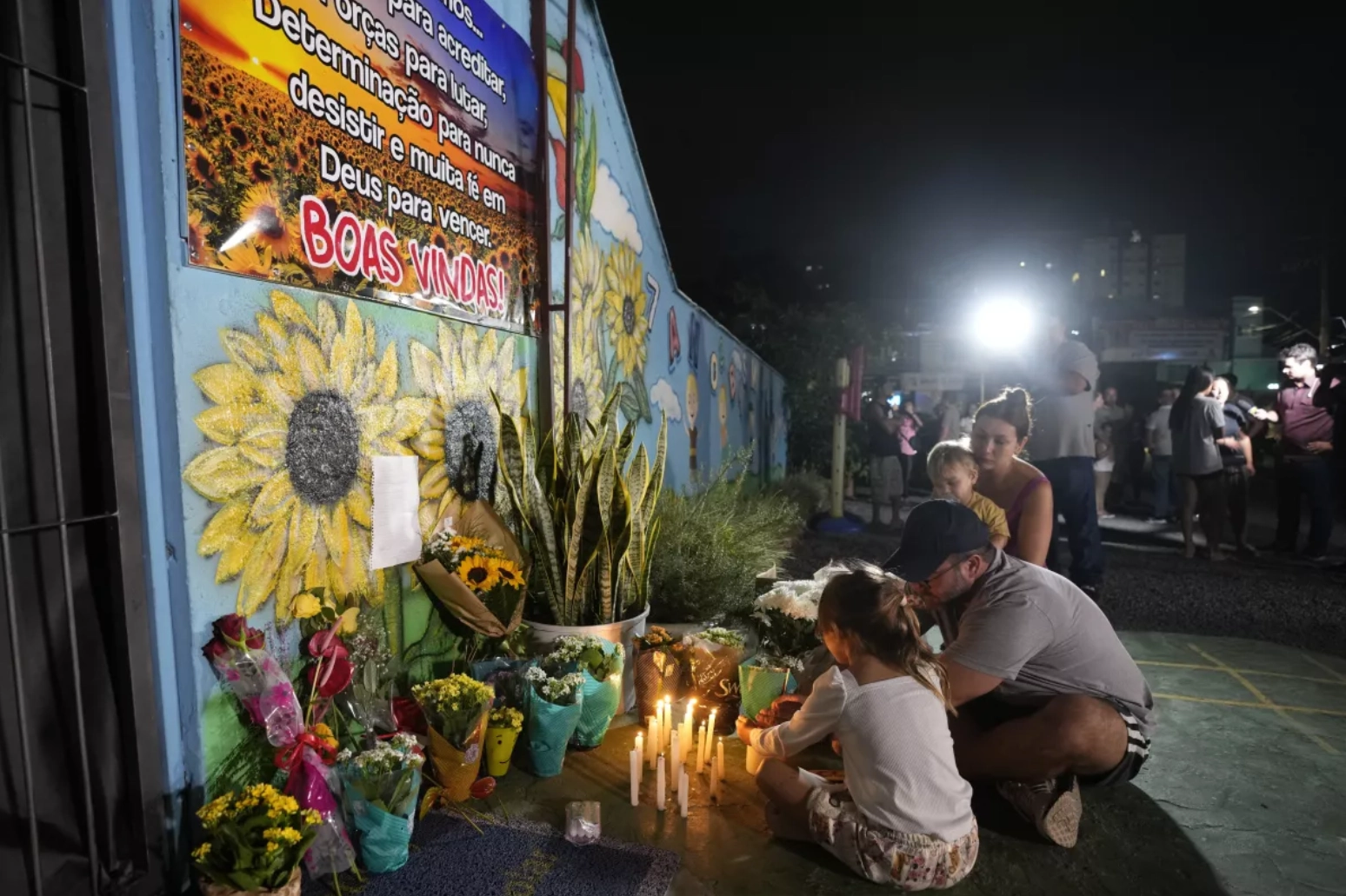Coauthors Lucas José Ramos Lopes and André Bakker da Silveira
On a global scale, the reasons that lead young people to carry out extremist attacks in schools are complex and multifactorial. However, they must be understood within the broader and more general context of violence in schools. Violence is a dynamic phenomenon related to the school environment that has long been neglected and underestimated by society and governments.
In addition to understanding the many facets of violence in the school and its community, thinking strategically about preventing violent extremism also requires understanding the so-called “push and pull” factors. These factors represent situations that influence a person’s entry into extremist spaces and lead them to appropriate the ideology present there, which may or may not lead to an act of extremist violence.
Push factors are social isolation and the feeling of being a victim of society, the government, or social movements (typical in masculinist groups, such as incels ― involuntary celibates ― who see feminism as an enemy to be fought). The pull factors are those that come from extremist groups, but are disorganized. Those factors make an individual feel connected to the ideology or cause and have a sense of belonging and purpose through the simplification of the world.
According to the Brazilian Public Safety Yearbook 2023, discrimination, which is a behavior that should be considered as an alert in the search for the prevention of violent extremism, is part of the school’s daily routine. Considering the principals interviewed, 15.5% affirm having observed discrimination against a member of the school community. From the perspective of the aggressor and the victim, discrimination should also be seen as a factor that pushes young people toward violent extremism, since the power of this violence in the formation of individual identities, such as homophobia, racism, ableism, sexism, fatphobia or xenophobia, among others, is remarkable.
It is important to remember that the school, as an institution, also produces and reproduces symbolic violence and micro violence with its own mechanisms that can exclude, and restrict freedoms and forms of expression. Institutional violence in schools occurs in a network of meanings, gestures, and words, and is determined by the structure of the institution. Often, the institution even disregards spontaneous manifestations of violence and turns a blind eye to violations of other rights.
The Brazilian Public Safety Yearbook 2023 also draws attention to the naturalization of violence but reveals something more complex. One example is the data related to the theft of school supplies, backpacks, notebooks, pencil cases, money, often cell phones, and other objects. Often, this is seen as a banal act and it is not taken into account that it can lead to a loss of confidence in the school institution.
Affirming the school as a place of protection, as well as a place of welcome, requires supporting it in the recomposition of the ability to communicate with the new cultures of children, adolescents, and young people, as well as their families, taking into account the social inequalities that transform and often strain social relations.
No school is an island
According to the Report of recommendations to combat hate speech and extremism in Brazil, which was published by the Ministry of Human Rights and Citizenship, extracurricular aspects such as the cult of violence as a form of justice and armamentism are associated with violence against schools. In addition, violence around the school generates a feeling of insecurity and puts students and teachers in a constant state of alert and stress, which negatively impacts interaction and learning. Instances of shootings, stray bullets, and police operations around schools arouse anxiety and fear. In 2021 alone, 1,295 schools, or 1.7% of the total nationwide, reported instances of shootings and stray bullets. In the same year, 0.9% of Brazilian schools had their academic calendars interrupted due to situations of violence.
Violence against children and adolescents influences schools with different aspects: external variables and other phenomena such as urban violence, authoritarianism, and extremism. Knowing the factors that push and bring children and young people into contact with extremist ideologies makes it possible to visualize how the school institution, with its already known multiple forms of violence, can contribute practically.
Prevention can be divided into three fronts: primary, secondary, and tertiary. The first is aimed at individuals already identified as aggressors or who are immersed in an extremist culture, while the second and third are focused on society as a whole and on vulnerable groups, respectively. At the school level, it will be necessary to train and inform the community, staff, and especially teachers, so that they understand the problem and act in primary and secondary prevention.
The solution to these problems will not depend simply on individual or public security responses with repressive policies. It is urgent to employ school coexistence programs that consider democratic pluralism and deconstruct stereotypes and hegemonic positions through a public policy of prevention so that the daily risk becomes a daily protector.
*This text is part of the project (Re)connect: bringing people closer to schools to overcome violence, carried out by the Aurora Institute, with the institutional support of L21. To support the initiative, visit: https://apoia.se/reconectar_escolas
Executive Secretary of the Brazilian Coalition to End Violence against Children and Adolescents. Master in Human Rights, Pontifical Catholic University of Paraná (PUCPR).
Research and Project Manager, Aurora Institute for Human Rights Education. Master in Philosophy, by the Federal University of Paraná (UFPR), and member of the Municipal Commission of Human Rights of Curitiba.
Translated from Spanish by Janaína Ruviaro da Silva













